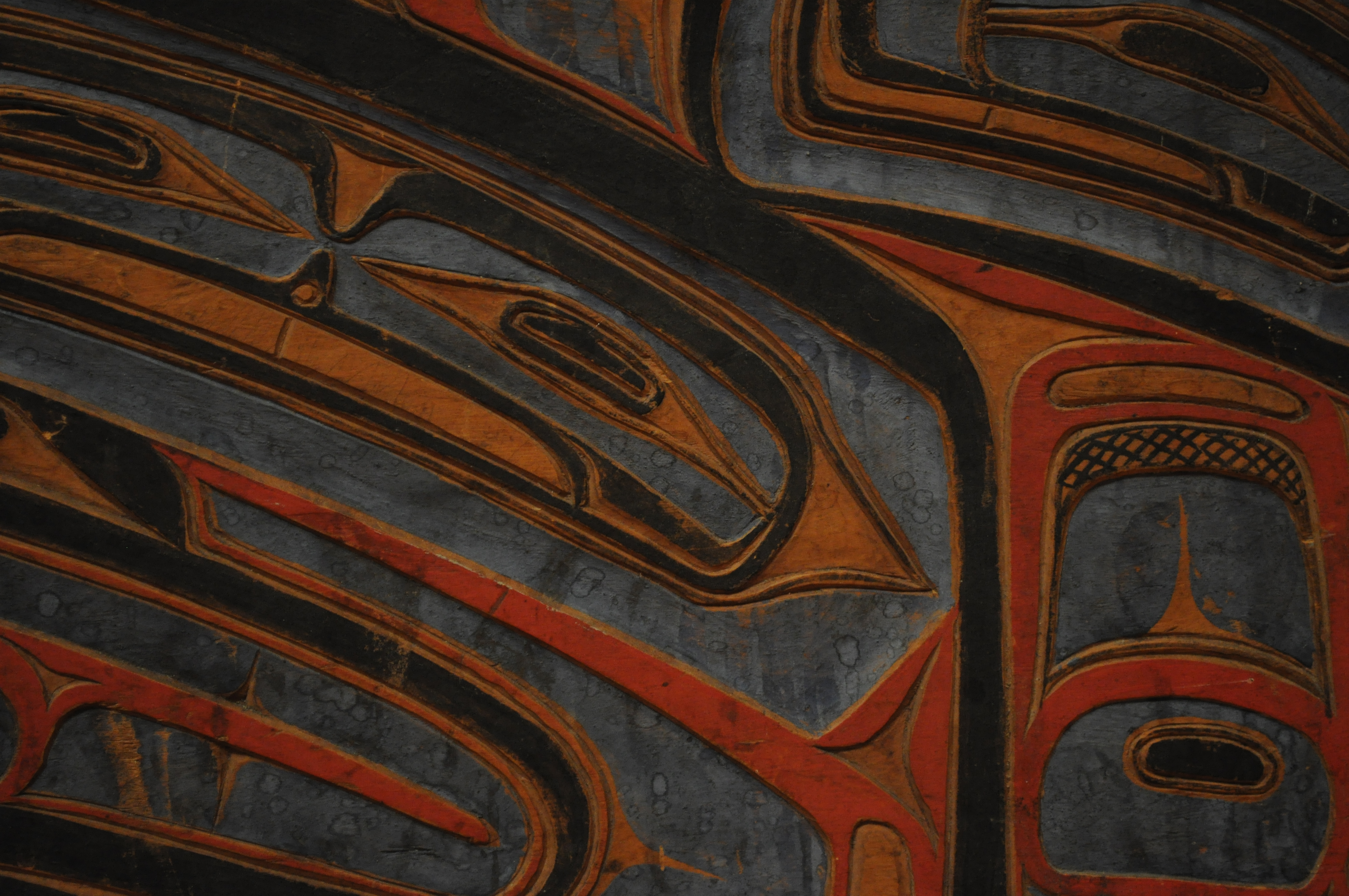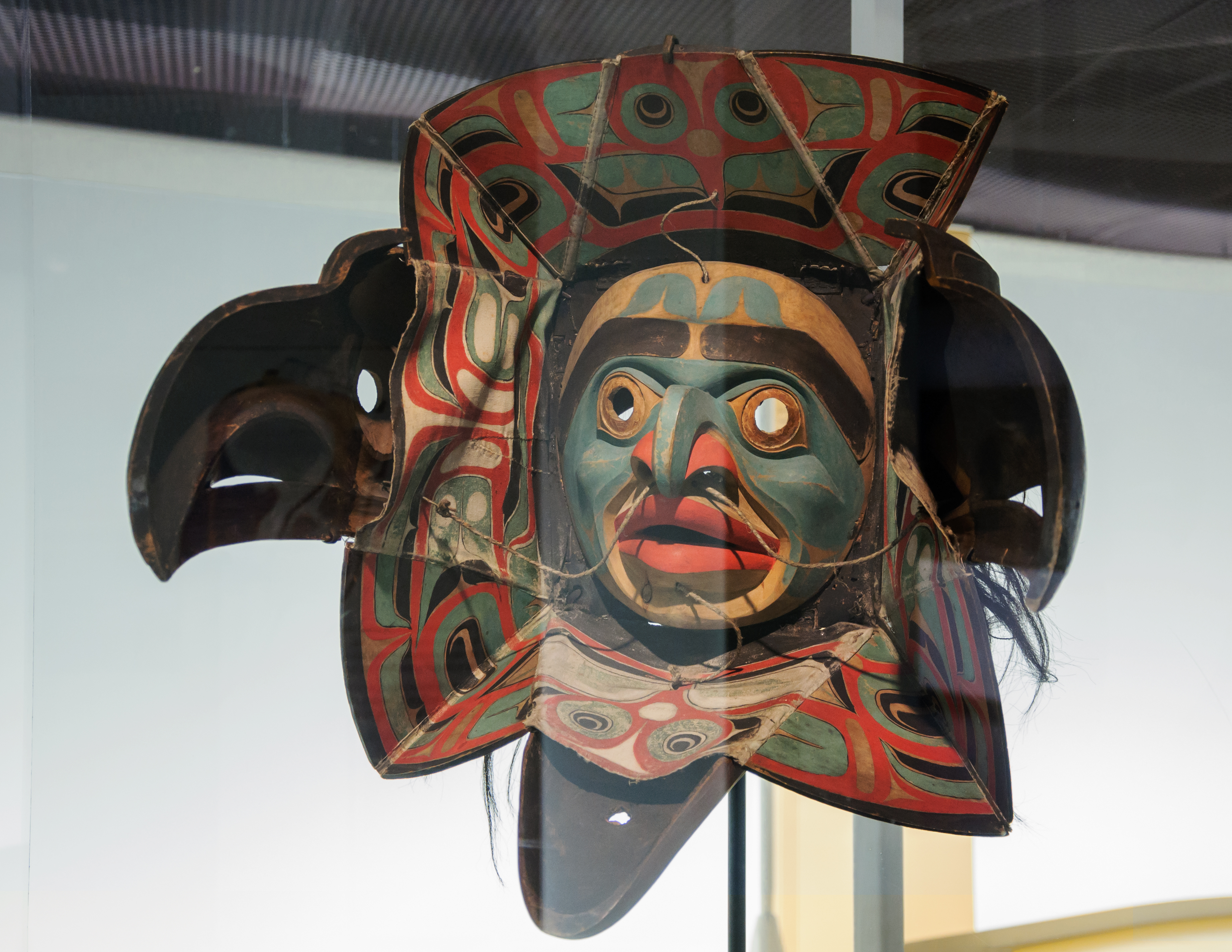|
Heiltsuk
The Heiltsuk , sometimes historically referred to as ''Bella Bella'', or ''Híɫzaqv'' are an Indigenous peoples of the Pacific Northwest Coast, Indigenous people of the Central Coast Regional District, Central Coast region in British Columbia, centred on the island community of Bella Bella, British Columbia, Bella Bella. The government of the Heiltsuk people is the Heiltsuk Nation, though the term is also used to describe the community. Its largest community is Bella Bella. They should not be confused with the Salishan languages, Salish-speaking Nuxalk peoples, who were formerly usually called Bella Coola in English. History Ancestors of the Heiltsuk (Haíɫzaqv) have been in the Central Coast region of British Columbia since at least 7190 BCE or possibly even up to 12,000 BCE as evidenced by a 2017 archaeological study of their traditional home on Triquet Island. The Heiltsuk (Haíɫzaqv) are the main descendants of Haíɫzaqvḷa(Heiltsuk)-speaking people and identify as ... [...More Info...] [...Related Items...] OR: [Wikipedia] [Google] [Baidu] |
Heiltsuk Nation
The Heiltsuk Nation (Heiltsuk_dialect, Heiltsuk: ''Haíɫzaqv'') is a First Nations in Canada, First Nations government in the Central Coast Regional District, British Columbia, Central Coast region of the Canadian province of British Columbia, centred on Campbell Island in the community of Bella Bella, British Columbia. The Heiltsuk people speak the Heiltsuk language, and were, like their language, and along with the neighbouring Haisla people, Haisla and Wuikinuxv (Owekeeno) peoples, incorrectly known in the past as the "Northern Kwakiutl". The Heiltsuk were also known as the Bella Bella, after their core community. The present day Heiltsuk First Nation is an amalgamation of 5 tribal groups who inhabited an area approximately 6000 square miles of the British Columbia Coast, Central Coast of British Columbia. The Heiltsuk peoples lived off of both land and sea in the region between Milbanke Sound and Fisher Channel. Heiltsuk territories include numerous inlets, islands, peni ... [...More Info...] [...Related Items...] OR: [Wikipedia] [Google] [Baidu] |
Heiltsuk Dialect
Heiltsuk , ''Híɫzaqv'', also known as Bella Bella and Haihais, is a dialect of the North Wakashan (Kwakiutlan) language Heiltsuk-Oowekyala that is spoken by the Haihai ( Xai'xais) and Bella Bella First Nations peoples of the Central Coast region of the Canadian province of British Columbia, around the communities of Bella Bella and Klemtu, British Columbia. Bella Bella is the headquarters of the Heiltsuk Nation government. There are only seven fluent speakers left of Heiltsuk. Heiltsuk is spoken in the villages of Bella Bella and Klemtu, both located on coastal islands in British Columbia not far from Bella Coola and Ocean Falls. It is one of the four Northern Wakashan languages, the others being Haisla (spoken in Kitimaat), Oowekyala (in Rivers Inlet), and Kwakwala (in Alert Bay, Port Hardy, and various settlements). Heiltsuk is considered to be a dialect of Heiltsuk-Oowekyala, which, like neighbouring Haisla and Kwak'wala, are part of the Northern Wakashan language gro ... [...More Info...] [...Related Items...] OR: [Wikipedia] [Google] [Baidu] |
Bella Bella, British Columbia
Bella Bella, also known as Waglisla, is the home of the Heiltsuk and is an unincorporated community and Indian reserve community located within Bella Bella Indian Reserve No. 1 on the east coast of Campbell Island (British Columbia), Campbell Island in the British Columbia Coast, Central Coast region of British Columbia, Canada. Bella Bella is located north of Port Hardy, on Vancouver Island, and west of Bella Coola, British Columbia, Bella Coola. The community is on Lama Passage, part of the Inside Passage – a transportation route linking the area, and northern British Columbia as well as Alaska for marine vessels carrying cargo, passengers and recreational boaters from the south coast. The settlement "forms a national capital of sorts" to the Heiltsuk. Founded between 1897 and 1903, Bella Bella is located on Campbell Island. Originally styled New Bella Bella to distinguish it from "Bella Bella", the community's official post office name for some time was Waglisla, meani ... [...More Info...] [...Related Items...] OR: [Wikipedia] [Google] [Baidu] |
Old Bella Bella
Old Bella Bella, also known as Old Towns or Qlts, was the name for the Heiltsuk village that grew up around the Hudson's Bay Company's historic Fort McLoughlin, at McLoughlin Bay on Campbell Island. The village relocated to the present site of Bella Bella, British Columbia by 1903. Today the Heiltsuk control the site, which houses a BC Ferries terminal, fish plant, and two houses, as well as archaeological remains of the old village. Located on Campbell Island opposite the modern town now carrying the name Shearwater, the village grew and the Hudson's Bay Company closed the fort and replaced their operations with steam-ships. William Fraser Tolmie a Scottish doctor and fur trader employed by the Hudson's Bay Company left a record of some of his time at the fort and observed the development of the Heiltsuk village there. Early history The Heiltsuk village of Old Bella Bella (then simply Bella Bella) grew up adjacent to Fort McLoughlin, the Hudson's Bay Company trading fort at ... [...More Info...] [...Related Items...] OR: [Wikipedia] [Google] [Baidu] |
Indigenous Peoples Of The Pacific Northwest Coast
The Indigenous peoples of the Americas, Indigenous peoples of the Pacific Northwest Coast are composed of many nations and tribal affiliations, each with distinctive cultural and political identities. They share certain beliefs, traditions and practices, such as the centrality of salmon as a resource and spiritual symbol, and many cultivation and subsistence practices. The term ''Northwest Coast'' or ''North West Coast'' is used in anthropology to refer to the groups of Indigenous people residing along the coast of what is now called British Columbia, Washington (state), Washington State, parts of Alaska, Oregon, and Northern California. The term ''Pacific Northwest'' is largely used in the American context. At one point, the region had the highest population density of a region inhabited by Indigenous peoples in Canada.Aboriginal Identity (8), Sex (3) and Age Groups (12) for the Population of Canada, Provinces, Territories, Census Metropolitan Areas and Census Agglomerations, 2006 ... [...More Info...] [...Related Items...] OR: [Wikipedia] [Google] [Baidu] |
1862 Pacific Northwest Smallpox Epidemic
The 1862 Pacific Northwest smallpox epidemic was a smallpox outbreak that started in Victoria on Vancouver Island and spread among the indigenous peoples of the Pacific Northwest Coast and into the indigenous peoples of the Northwest Plateau, killing a large portion of natives from the Puget Sound region to Southeast Alaska. Two-thirds of British Columbia natives died—around 20,000 people. The death rate was highest in southeast Alaska and Haida Gwaii—over 70% among the Haida and 60% among the Tlingit. Almost all native nations along the coast, and many in the interior, were devastated, with a death rate of over 50% for the entire coast from Puget Sound to Sitka, Alaska, part of Russian America at the time. In some areas the native population fell by as much as 90%. The disease was controlled among colonists in 1862 but it continued to spread among natives through 1863. While colonial authorities used quarantine, smallpox vaccine, and inoculation to keep the disease from spr ... [...More Info...] [...Related Items...] OR: [Wikipedia] [Google] [Baidu] |
Fort McLoughlin
Fort McLoughlin was a fur trading post established in 1833 by the Hudson's Bay Company (HBC) on Campbell Island in present-day British Columbia, Canada. At the time the Hudson's Bay Company performed quasi-governmental duties on behalf of the British Empire as well as undertaking trade for profit. The site is believed to have been at McLoughlin Bay on the northeast side of Campbell Island and is associated with the relocation of the Heiltsuk community of Bella Bella from its former location on islets near Denny Island. The McLoughlin name, which is that of John McLoughlin, regional head of company operations at that time, is also found in a lake and a creek entering that bay, and was conferred on these locations after the fort had closed. Background One of the primary reasons for the establishment of Fort McLoughlin, as well as Fort Simpson to the north, was to undermine the American dominance of the Maritime Fur Trade. By 1830 the higher prices paid for furs by American c ... [...More Info...] [...Related Items...] OR: [Wikipedia] [Google] [Baidu] |
R V Gladstone
''R v Gladstone'', 9962 S.C.R. 723 is a leading Supreme Court of Canada decision on non-treaty Aboriginal rights under section 35 of the ''Constitution Act, 1982''. The Court modified the ''Sparrow'' test for the extinguishment of Aboriginal rights to give more deference to the government in protecting commercial fishing rights. Background William and Donald Gladstone were members of the Heiltsuk Band in British Columbia. They were both charged with selling herring spawn contrary to the federal ''Fisheries Act''. In their defence, the brothers claimed that they had a right to sell herrings under section 35 of the ''Constitution Act, 1982''. At trial, they presented evidence showing that trade of herring spawn was a significant part of the Heiltsuk band's way of life prior to contact. The Court found that the Heiltsuk have a pre-existing right to harvest Herring (eggs) and that there is a commercial component to this right. Opinion of the Court Chief Justice Lamer, for the majori ... [...More Info...] [...Related Items...] OR: [Wikipedia] [Google] [Baidu] |
Nuxalk
The Nuxalk people (Nuxalk language, Nuxalk: ''Nuxalkmc''; pronounced )'','' also referred to as the Bella Coola, Bellacoola or Bilchula, are an Indigenous peoples of the Pacific Northwest Coast, Indigenous First Nations in Canada, First Nation of the Indigenous peoples of the Pacific Northwest Coast, Pacific Northwest Coast, centred in the area in and around Bella Coola, British Columbia within their wider traditional territory: Kulhulmcilh. Their language is also called Nuxalk language, Nuxalk. Their on-reserve tribal government is the Nuxalk Nation. Name and tribes/groups The name "Bella Coola", often used in academic writing, is not preferred by the Nuxalk; it is a derivation of the neighbouring Wakashan-speaking coastal Heiltsuk people's name for the Nuxalk as ''bəlxwəlá'' or ''bḷ́xʷlá'', meaning "stranger" (rendered plxwla in Nuxalk orthography). Within the Nuxalk language, "Nuxalkmc" is the term for the people, and "ItNuxalkmc" is the term for the language, and th ... [...More Info...] [...Related Items...] OR: [Wikipedia] [Google] [Baidu] |
British Columbia Coast
The British Columbia Coast, popularly referred to as the BC Coast or simply the Coast, is a geographic region of the Provinces and territories of Canada, Canadian province of British Columbia. As the entire western continental coastline of Canada along the Pacific Ocean is in the province, it is synonymous with being the West Coast of Canada. While the exact boundaries are variously defined, the region is generally defined to include the 15 regional districts that have coastline along the Pacific Ocean or Salish Sea, or are part of the Lower Mainland, a subregion of the British Columbia Coast. Other boundaries may exclude parts of or even entire regional districts, such as those of the aforementioned ''Lower Mainland''. Boundaries While the term ''British Columbia Coast'' has been recorded from the earliest period of non-native settlement in British Columbia, it has never been officially defined in legal terms. The term has historically been in popular usage for over a century to ... [...More Info...] [...Related Items...] OR: [Wikipedia] [Google] [Baidu] |



